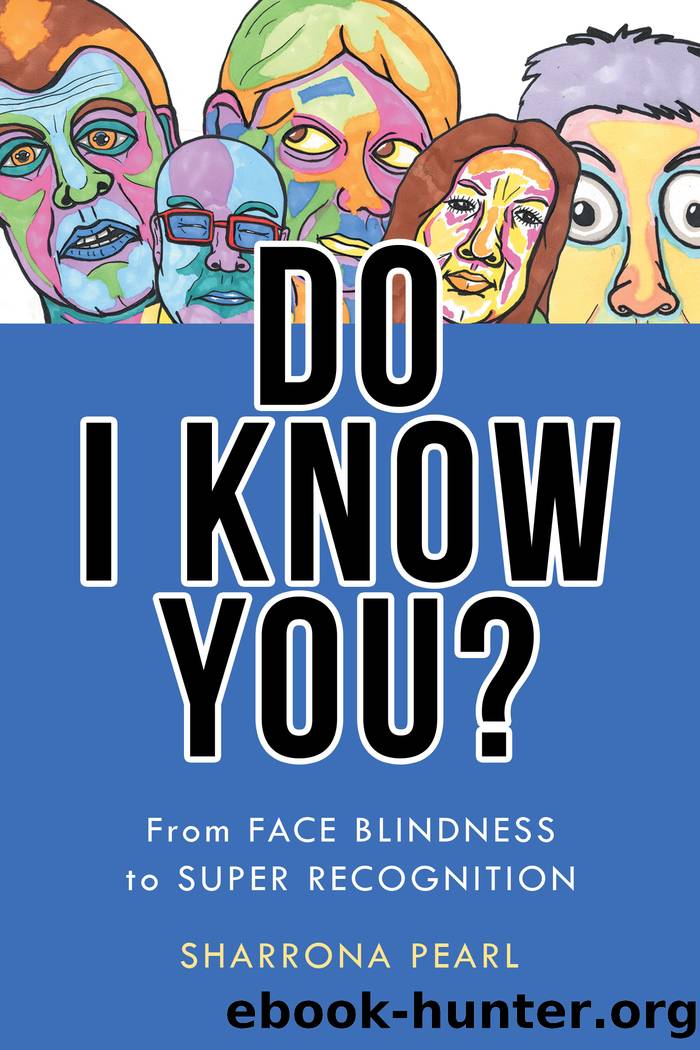Do I Know You? by Pearl Sharrona;

Author:Pearl, Sharrona; [Pearl, Sharrona;]
Language: eng
Format: epub
Publisher: Johns Hopkins University Press
Published: 2023-12-15T00:00:00+00:00
At Checkpoint Charlie: The ABCs of Face Fraud Detection Training
The Berlin Wall was built in 1961, creating a physical and tangible separation between East and West Germany in particular, and the East and West in the Global North more broadly. The wall made passage between the two halves of Germany more challenging, but like all borders, it remained porous. The Grenzübergangsstelle FriedrichstraÃe-ZimmerstraÃe, known in English as Checkpoint Charlie (figure 5.1), was the only designated and allowable border crossing point for both members of the allied forces and non-German citizens.16 The checkpoint was highly visible and gained considerable cultural traction in film, television, and fictional narratives.17 In its way, Checkpoint Charlie has remained quite famous, now serving as a major tourist destination with many of its artifacts displayed in museums worldwide. Checkpoint Charlie Mauer Museum was founded shortly after the construction of the wall and has been operating since October 19, 1962. The checkpoint was busy, both with legitimate crossings and those seeking to flee to the west or to access loved ones (and cheaper shopping) in the east. As Marieke Drost has chronicled in âNose Matching at Checkpoint Charlie,â the first three years of the wall saw a huge exodus of East Germans using borrowed passports from West German citizens who resembled them enough to pass the possibly substandard scrutiny of the border guards. So the border guards got tougher, or at least their training did: in 1964, guards staffing the border between East and West Germany fell under the administration of the notorious Stasi, who developed extensive instruction guides and testing mechanisms to improve the detection of identity and passport fraud.18
The Wende Museum in Culver City has an extensive collection of training manuals as part of its Peter Bochmann collection. The manuals include detailed images of faces and side-by-side comparisons of features designed to improve verification techniques and limit the number of people getting through with stolen or borrowed identity documents. Broken down by feature types for eyes, lips, nose, and head shape, profile, nature of facial hair, and the triangle of nose, lips, and chin, these manuals guided guards through specific types of comparisons that highlighted how to categorize features and see if they correspond between person and picture. In Marieke Drostâs evocative framing, this collection of âbiometric technology avant la lettre,â took the underlying theories of greatest hits guys like Lombroso and Bertillon and applied it directly to border patrol, producing a small industry of not just material but testing mechanisms, with the ability to perform well on matching tasks now part of the requirements for the job.19 If nothing else, given the challenges in improving matching skills, the presence of the Stasi ensured a more rigorous checking process that would itself eliminate any errors born of lack of close scrutiny. It seemed to work: by 1975, almost no one with a fraudulent passport slipped through the checkpoint.20
Figure 5.1. Checkpoint Charlie, April 8, 2013. Courtesy of Jaipreet Virdi
Download
This site does not store any files on its server. We only index and link to content provided by other sites. Please contact the content providers to delete copyright contents if any and email us, we'll remove relevant links or contents immediately.
Application of a Novel Technique for Clinical Evaluation of Nitric Oxide-Induced Free Radical Reactions in ICU Patients by Unknown(693)
Rosenâs Emergency Medicine Concepts and Clinical Practice by Ron Walls; Robert Hockberger; Marianne Gausche-Hill; Timothy B. Erickson; Susan R. Wilcox(571)
Oxidative damage to surfactant protein D in pulmonary diseases by Vitality Starosta1 & Matthias Griese1†(406)
Social Science Perspectives on Global Public Health by Vincent La Placa & Julia Morgan(372)
Constructing Canine Consent; Conceptualising and Adopting a Consent-focused Relationship with Dogs by ERIN JONES(328)
Organic Chemistry: An Acid - Base Approach by MICHAEL SMITH(299)
ADVANCED EMERGENCY CARE AND TRANSPORTATION OF THE SICK AND INJURED by Unknown(269)
Saunders Nursing Drug Handbook 2024 - E-Book by Unknown(262)
Davis's Comprehensive Manual of Laboratory and Diagnostic Tests with Nursing Implications by Unknown(245)
Socio-Life Science and the COVID-19 Outbreak : Public Health and Public Policy by Makoto Yano; Fumihiko Matsuda; Anavaj Sakuntabhai; Shigeru Hirota(244)
Diagnostic and Statistical Manual of Mental Disorders, Fifth Edition, Text Revision (DSM-5-TR(tm)) by Unknown(244)
Human Microanatomy; Cell Tissue and Organ Histology with Celebrity Medical Histories by Stephen A. Stricker(242)
Berne and Levy Physiology E-Book by Unknown(234)
Replacing the Dead by Mie Nakachi;(229)
Handbook of Skin Disease Management by Jiyad Zainab;Flohr Carsten; & Carsten Flohr(228)
Access to Medicines and Vaccines in the South : Coherence of Rules and Policies Applied by the European Union Commission by Stephen Kingah(224)
The Pocket Guide to Sensorimotor Psychotherapy in Context (Norton Series on Interpersonal Neurobiology) by Pat Ogden(218)
Deep Learning and Medical Applications by Unknown(217)
Advances and Technical Standards in Neurosurgery by Unknown(213)
